The Office of the Superintendent of Financial Institutions (OSFI) released various proposals on Thursday to further tighten mortgage underwriting standards at federally regulated lenders.
The biggest change is the implementation of a stress test for all uninsured mortgages (those with a down payment of more than 20%). Under current banking rules, only insured mortgages, variable rates and fixed mortgages less than five years must be qualified at a higher rate. That rate, of course, is the Bank of Canada’s posted rate (currently 4.64%, a few points higher than typical contract rates). Going forward, it will be replaced by a 200-basis-point buffer above the borrower’s contract rate.
The other proposed changes include:
- Requiring that loan-to-value measurements remain dynamic and adjust for local conditions when used to qualify borrowers; and
- Prohibiting bundled mortgages that are meant to circumvent regulatory requirements. The practice of bundling a second mortgage with a regulated lender’s first mortgage is often used to get around the 80%+ loan-to-value limit on uninsured mortgages.
The extension of stress testing to all uninsured mortgages would have a far greater impact. It would shut many borrowers out of the market, drive them into less suitable housing, or send them into the arms of credit unions or sub-prime lenders that are not federally regulated.
Mortgage Professionals Canada, for its part, has expressed objections to the proposed regulations.
“We have initial concerns with the impact the 2% stress test will have on Canadian consumers and questions around the uncertainty that the dynamic Loan-to-Value (LTV) measurements may have in the marketplace,” it said in an email to members.
OSFI said its proposed changes will be available for public input until August 17, 2017. Feedback can be sent via email to B.20@osfi-bsif.gc.ca.
The updated B-20 guidelines for mortgage underwriting will be issued in the fall and come into effect shortly thereafter, OSFI said.
“The draft changes to Guideline B-20 released today are consistent with messages that OSFI has been delivering through public statements and in direct conversations with federally regulated financial institutions through our supervisory work,” said Carolyn Rogers, Assistant Superintendent, Regulation Sector.
The proposals are just the latest in a long line of changes to how mortgages are written in Canada. The government began its regulatory tightening campaign nearly nine years ago to “reduce the risk of a U.S.-style housing bubble developing in Canada.” (Those were the words of the Department of Finance in 2008.)
Here’s a brief history of some of those key mortgage rule changes:
- January 1, 2017: OSFI imposed onerous capital requirements on default insurers, thus disadvantaging many bank competitors (and consumers) by jacking up rates substantially on low-ratio insured mortgages.
- November 30, 2016: New stress test regulations were extended to include insured mortgages with 20% equity or more. It also banned certain mortgage types from being insured, including refinances, extended amortizations and single-unit rentals.
- October 17, 2016: The federal government introduced a stress test to be used in approving all high-ratio insured mortgages with terms of five years or more. It required such borrowers to prove they can handle payments at the Bank of Canada’s posted 5-year rate (currently 4.64%).
- February, 2016: The Department of Finance announced it was increasing the minimum down payment from 5% to 10% on the portion of a home’s price that’s above $500,000.
- November, 2014: OSFI releases its B-21 guidelines, which set out insurer restrictions on everything from debt-ratio calculations and self-employment evaluation to borrowed down payments and cash-back mortgages.
- July 9, 2012: The government reduced the maximum amortization period to 25 years for high-ratio insured mortgages, limited the gross debt service and total debt service ratios permitted to 39% and 44%, respectively, banned mortgage insurance on properties over $1 million and implemented a maximum 80% LTV for refinances.
- March 18, 2011: Regulators introduced a 30-year maximum amortization on insured mortgages over 80% LTV, an 85% loan-to-value limit on insured refinances and eliminated government insurance on secured lines of credit (e.g., HELOCs).
- April 19, 2010: The government introduced stress testing for insured mortgages using the Bank of Canada’s 5-year posted rate. Other key changes included a 90% LTV max. on refinances (down from 95%), and an 80% LTV maximum for rental financing.
- October 15, 2008: The first mortgage rule changes announced by the government eliminated 40-year amortizations (dropping them to 35), raised the minimum insured credit score, added a new maximum total debt service ratio of 45% and additional loan documentation standards.


No comments:
Post a Comment